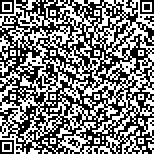| 摘要: |
| 利用1981、1985、1989、1993年5月和8月的定点拖网资料,选出大型无脊椎动物主要种,研究其多年变化规律,并预测其变化趋势。统计结果表明,各年5月份的平均捕获量分别为:1981年1252、1985年1480、1989年1076、1993年556个/(网*时),呈明显的指数下降趋势,这种趋势符合X=-4275.244e-0.4302066t+5527.244的规律;每年8月份的资源量分别为:1981年3190、1985年8474、1989年2027、1993年631个/(网*时),亦呈明显的下降,符合X=-11266.9e-1.202198t+14456.9的规律。以上变化趋势表明,若不采取有关措施,资源将近枯竭。 |
| 关键词: 大型无脊椎动物 数量变动 数学模型 趋势预测 |
| DOI: |
| 分类号: |
| 基金项目:中国科学院重大项目资助,KY85-08-01号 |
附件 |
|
| PREDICTION OF LONG TERM CHANGE OF ABUNDANCE OF LARGE INVERTEBRATES IN THE JIAOZHOU BAY, YELLOW SEA |
|
LIU Rui Yu, HUANG Bo, XU Feng Shan, LI Xiao Hong
|
|
Institute of Oceanology, The Chinese Academy of Sciences, Qingdao, 266071
|
| Abstract: |
| The shallow waters along the Yellow Sea coast are rich in large economic invertebrates such as the decapod and stomatopod crustaceans and cephalopod molluscs which are main catches of local fisheries. Most species of these groups spawn in shallow coastal waters in late spring or early summer by May, the new born juveniles feed and grow fast in summer and autumn when water temperature is comparatively high. Some of them migrate to offshore waters where food organisms are rich. Most of them may grow up into the recruitment stock and the peak of their abundance appeared generally in August. Recent over-exploitation of coastal fishery resources by growing fishing effort resulted in great change of abundance and stock size of most species of these invertebrates. The stock size of most of these economic species decreased obviously in recent years as compared with those data obtained in the 1980’s excepting certain species whose stock size seems to be increased. The present paper predicts the trend of the long term change in abundance of the main species of large invertebrates by the functions based upon the trawling data obtained in May and August of 1981, 1985, 1989 and 1993. The functions simulating the trend of this change in May, model (1), and in August, model (2), are developed as follows:
X=-4275.244e-0.4302066t+5527.244 (1)
X=-11266.9e-1.202198t+14456.9 (2)
where X is individual number, t is time (year).
According to model (1) and Fig.1, the number of individuals of these invertebrates show a declining trend since 1985, when an average catch of 1480 ind./(net*h) in 1989 decreased to 1076, in 1993 to a low of 556. The most obviously decreased number may be seen in Charybdis japonica, Sepiella maindroni, Sepia esculenta and Fenneropenaeus chinensis. The decrease of broodstock of Sepiella in May resulted in the decrease of its number of individuals in August.
Based on the model (2) and Fig.2, similar results have been seen with the exception of Loligo spp. The catch of which increased somewhat in 1989 and 1993 after its decrease in 1985.
Overfishing of the matured females of Fenneropenaeus chinensis in April in the year resulted in the decrease of the abundance of its broodstock in May and the new born young shrimps in August. Different results may be seen in the change of number of the predator species Oratosquilla oratoria and the non-economic sea urchin Temnopleurus toreumaticus. The stock size of the former species increased distinctly in recent years. The number of individuals of it in August is 17, 164, 265 and 88 in 1981, 1985, 1989 and 1993 respectively. The increase in number of individuals is distinctly the result of overfishing and the change of ecosystem structure in the related coastal waters; the decrease in number of its competitor, the predator fishes, and the increase of food organisms may increase the stock size of the mantis shrimp. Overfishing of trawling fishery damaged not only the living resources, but also destroyed the bottom environments, the habitats of most bottom dwelling organisms, and resulted in the decrease of stock density of certain non-economic species such as the sea urchin Temnopleurus toreumaticus, the total catch of it decreased from 3190, 8474 and 2027 in 1981, 1985 and 1989 respectively to 631 ind./(net*h) in 1993.
The data listed in Table 1 have shown the decrease of total relative catch of large invertebrates from each sampling stations.
The results of this study have shown that the decrease of stock size of large invertebrates is due to over exploitation. The predicted change trends of the invertebrate resources in the studied area indicates that the following effective measures to enhance the management of fishing activities and the preservation of fishery resources in the Yellow Sea should be immediately adopted for the maintenance of their sustainable development:
1. To decrease the fishing effort in coastal areas by cutting off or restricting the number of small fishing boat;
2. To forbid the catching of the broodstock (spawning stock), the juveniles and young stages of economic important species of large invertebrates in their spawning and nursing areas;
3. To postpone the open time of autumn catching season of restocked (released) Chinese shrimp, Fenneropenaeus chinensis, from August 25 to Sept ember 10 (the fast grow period) in the Yellow Sea and Bohai Sea. |
| Key words: Large invertebrate, Change of abundance, Mathematical model, Trend prediction |
